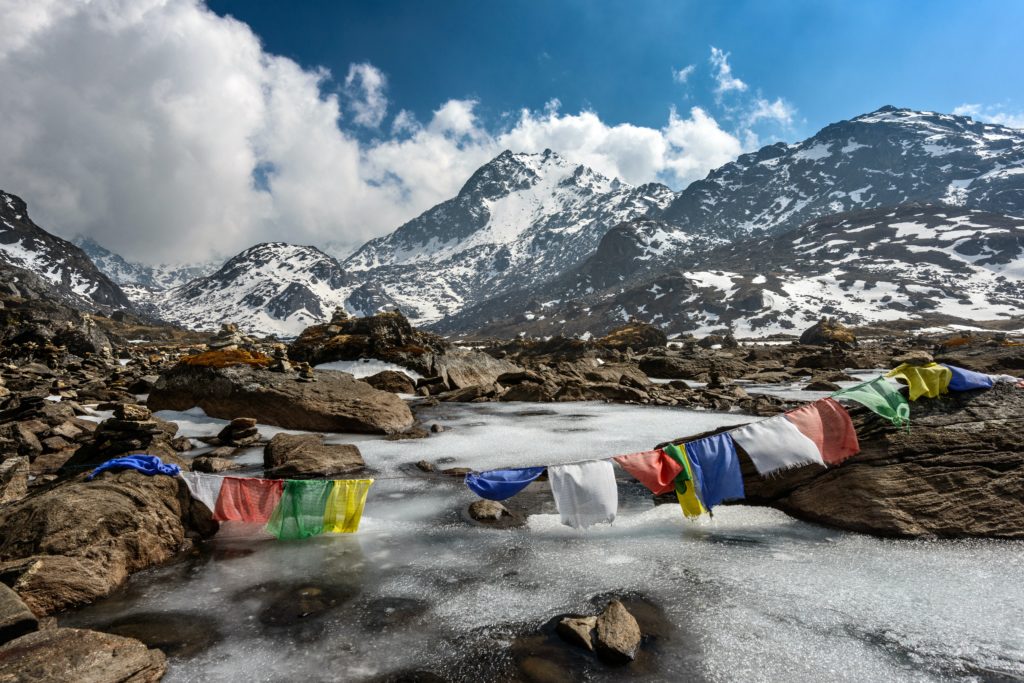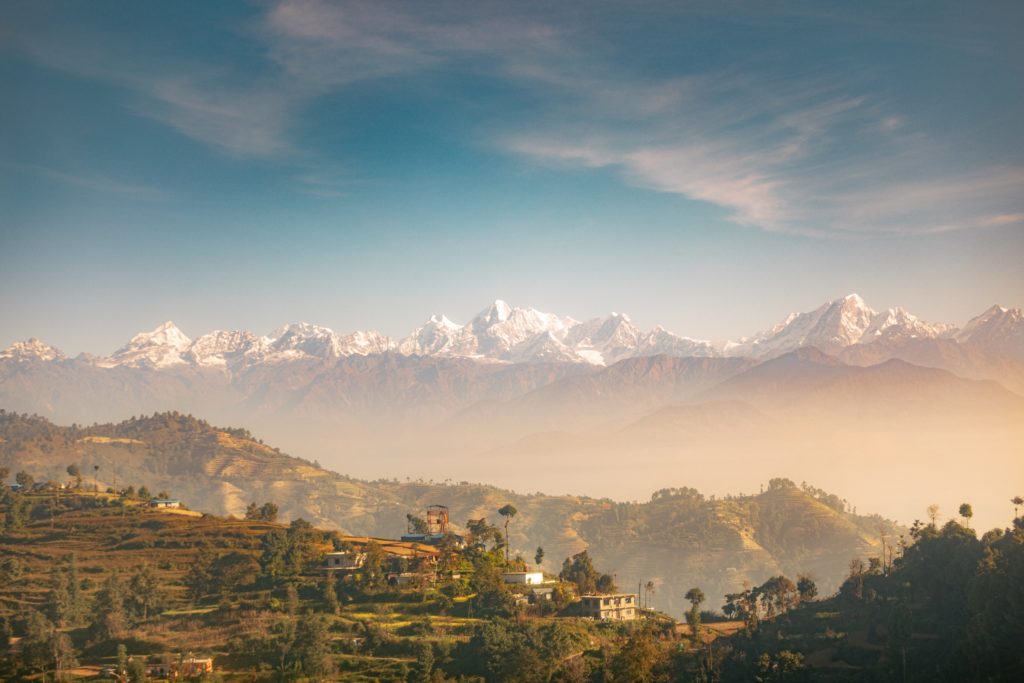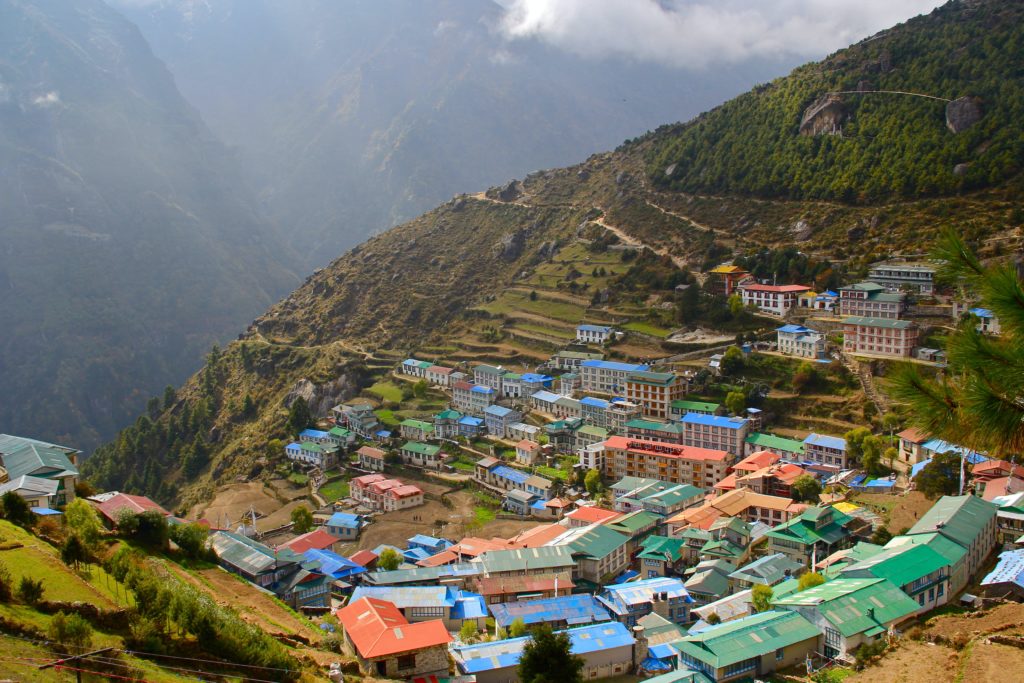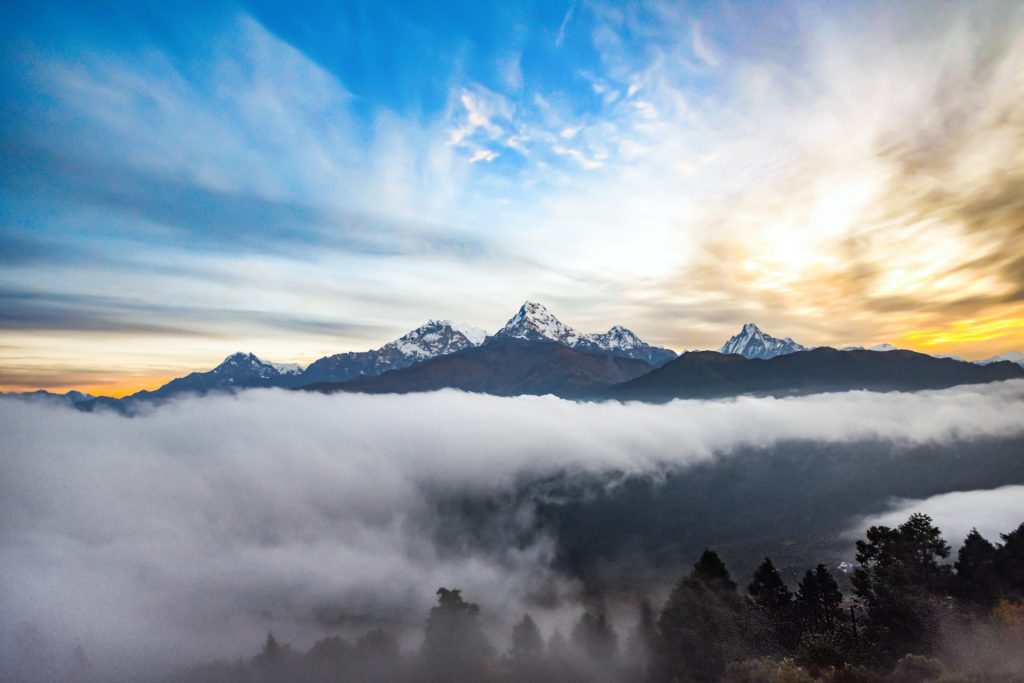A free training program for training CS reps with the skills, tools, and knowledge to delight customers and resolve issues.
When it comes to the Natural World and all of its riches, Nepal features some of the most awesome natural habitats in the world, including a staggering number of Eight-Thousanders - mountain peaks over 8000 metres high. Nepal boasts 8 out of a global total of 14.
So for this Postcards from Nepal, I decided to take a uniquely Nepalese, 'Everest-Eye' view of Environmentalism and Sustainability both from a country-wide viewpoint and also from my own personal perspective.
The Wrong Kind of Impact
According to a survey conducted by WEF, millennials rank climate change as the worlds most serious problem. Along with the boon of unprecedented economic prosperity brought by industrial revolution, also came the bane of large-scale disruption and destruction of the ecosystem, mainly through emissions of GHGs. Most developed and industrialized nations contribute a large proportion of the emissions. For instance, the US alone has contributed almost 25% of historic emissions till now. However, even countries which contribute little to none to the worlds emissions face the same or in most cases more hazardous effects of the emissions. Consider Nepal for example. In 2014 the countrys total GHG emissions were 44.06 million metric tons of carbon dioxide equivalent (MtCO2e), totaling 0.09% of GHG emissions, in sharp contrast to about 25%, 15% and 5% of worlds total emissions by the US, China, and India respectively.

The Climate Cost
Due to its geographical location and economic situation, Nepal is one of the most vulnerable countries to climate change. As Nepal is a landlocked country, it does not risk being submerged by the climate-change-induced rising sea level. However, it does carry the risk of facing wide-scale effects in its mountainous regions which are substantial. In the north, Nepal has a chain of remarkable mountain ranges. The Himalayas are home to the Nepalese Eight Thousanders. Sandwiched between China and India, two major carbon emitters, and located on the base of the Himalayas, the impact of climate change in Nepal could be massive. Increasing temperatures have already created tangible changes in the Nepalese climate, causing erratic shifts in the monsoon seasons. Also, the long-term effect of climate change creates more variance in rain patterns, increased landslides in the Nepal-China border, melting of snow and glaciers in the Himalayas, and changes in the river flows, all of which threatens the existence of flora and fauna and also the livelihood of people living near those regions.
A Smarter Way to Build Your Global Team
Sounding the Farm Alarm
Moreover, Nepal is a farming nation at heart. It is still heavily dependent on agriculture, which is highly vulnerable to climate change. Hence, the main impact is going to be in the agricultural industry as all the direct consequences of climate change add up to lower agricultural yields. Though awesome, most of the mountainous regions and arid-hilly regions are not favorable for agriculture. Only 21% of Nepalese land is cultivable, mainly in the terai belts, so any increase in earths temperature is only bad news. For example, the optimum temperature for paddy cultivation is considered to be around 30C, which is well below the already steaming hot Terai region, so any temperature increase will only further hamper crop yields. The instance of forest fires will also increase drastically due to increased aridity. All in all, given the current temperature trends, the impact of climate change in this tiny country gifted with natural and geographical diversity is likely going to be catastrophic.

Economic Boom or Environmental Bust
However, with all this considered the country also needs to make giant steps towards development. Nepal is one of the least developed countries which recently graduated from LDC status which will officially be instated from 2026. With over 20% of people under poverty line and a mere GDP per capita of 1000$, the country still has to make giant strides. Most countries which rank highest in terms of emissions/per capita also have the highest level of development and prosperity. Seemingly, when countries develop the emissions rate increases too, which shows a direct correlation between emissions and development. People might think there is a trade-off between development and environmental degradation. So, do all developing countries have to choose between sustainability or economic prosperity? Or is there a way in between?
To GDP or Not To GDP
Most countries measure growth with GDP index, which is simply the output produced within a given year in the country. It has been the standard growth model for decades. Consider the famous case of China and its magical story of being slightly beyond the US in GDP now. A few decades back, it was nowhere near the competition. Should all country seeking growth look up to the example of China to its double-digit growth rate maintained over many years? Apart from the socioeconomic context of that great leap, should the world consider it an ideal scenario within the context of sustainability. Sure, it took millions of people out of mass poverty but at what cost? Should countries try to replicate it, setting aside the sociopolitical context of that era? Should countries even consider GDP for measuring well-being and growth? Although GDP correlates with good economic and social outcome, correlation does not equate to causation. In this GDP could be deemed a short-term, product-oriented index which does not consider environmental degradation, income inequality, and other negative social externalities.
Inspirational Neighbours
On the flip side, consider the example of another South Asian country - Bhutan. Many people have a Shamabala-like image of the country: a small, landlocked carbon-negative culture, surrounded by mountains, with Buddhism as the main religion and Gross National Happiness (GNH) index, not GDP, as its measure. Must be utopia, right? Only Bhutanese people can truly answer this. But since adopting this framework in the 1970s, Bhutan has taken good steps toward positive development with a considerable reduction in poverty.
Bhutan emphasizes 4 main parts in their GNH index:
- Good governance
- Preservation of culture
- Conservation on environment
- Sustainable and equitable socio-economic growth [measured in GNH]
So far, it is a success story.
Decisions Decisions
Whenever people mention sustainability, the SDGs set by the UN often come to mind. Their multiple Impact areas paint a clear picture for action on a whole range of factors. Even though it is a big part of it, sustainability is not only about the environment. It is also about reducing poverty and hunger, increasing accessibility to education, clean water and sanitation, health facilities, energy, among other elusive goals.
So, should developing countries follow the example of China or Bhutan? Unfortunately, there is no simple or binary answer of either/or. Every country is different geographically, demographically, socially, politically, and economically. To simply cite one country as a development model, would demonstrate naivety and ignorance to the historical context. The answer must lie somewhere in between the Chinese and Bhutanese models.

Audacious Ambitions
Nepal too needs to ensure that the country takes considerable steps towards SDGs and maintain the equilibrium between economic prosperity and sustainable development. The planned Nijgadh International airport is a perfect example of this conundrum about economic development and sustainability. Currently, Nepal has 3 international airports, one of them will come into operation after 2 months while the other came into operation this month. However, due to various constraints, all 3 of them do not meet fully-fledged international standards. Also, with an expected rise in arrivals in the following years, Nepal has been searching for an international airport with state-of-the-art facilities. Nijgadh International Airport seemed to be the ideal project that would address this shortcoming. An hour from Kathmandu, accessed by the Kathmandu-Terai Express Highway currently under construction. It would be the largest airport in South Asia and 4th largest in the world in terms of land area upon completion. Everything seemed to be perfect - except what it would mean to the environment. Around 2.5 million trees would have to be felled for it to come to fruition. If the project goes forwards, then the rich natural diversity in and around the dense forest, home to a wide variety of flora and fauna, will be directly threatened. The potential negative impacts of this development on the surrounding environment have prompted the Supreme court to order for the project not to proceed.
Progress: Baby Steps? Or Giant Leaps?
So, should countries like Nepal not look forward to such megaprojects just due to environmental reasons. Talking about Bhutan again, even if it is able to remain carbon neutral when it pushes for economic growth through investments in the manufacturing sector and other means, it will face the impact of climate change due to having similar topographic conditions like Nepal. Bhutan will face the hazardous effect of the action of other countries even if it remains net zero- a goal which is a pipe dream for many countries and also a target set for 2050. It is important to have discussions about how to tackle these sorts of situation, one way maybe to compensate countries like Bhutan for their share of burden without being an active player. Moreover, projects like Nijgadh airport should be carried out but not without considering the cost-benefit aspect of the project for at least 50 years ahead. Some alternative places are suggested for the project, which must be looked upon properly.

Some Mountains Still to Climb
Furthermore, mountains in Nepal are already the biggest dumping sites in the world due to mountaineering activities and lack of proper waste management. As Nepal looks to welcome more tourists, travelers and intrepid mountaineers, the issues of discarded mountaineering debris and general rubbish are only likely to increase without the proper initiatives in place. Tourism too is a sector which is highly vulnerable to climate change. This year the industry was affected by unpredictable weather conditions as the country faced severe floodings and landslides in the mountainous regions . As the sector currently contributes about 7% of GDP, with this only likely to grow, the country must think of constructing the proper infrastructure to manage it albeit without threatening the very thing tourists visit Nepal for - its wealth of natural splendour.
Diversification Nations
Small Island countries like Nepal and Bhutan, where subsistence farming is still a major source of livelihood, and which depend on tourism for a large portion of their countrys economic activity, are one of the most vulnerable countries to climate change. In the face of increasing climate volatility, vulnerable and developing countries like them must look to minimize the effect by adapting accordingly. The main solution to this threat is diversifying economies. In an interconnected world vulnerable to so many shocks, to remain antifragile, countries solely dependent on one or two economic activities must diversify their economy. Other ways to address it are through innovative finance and improvement in institutions. In this regard, Bhutan seems to be a good example as mobilization of finance to improve the livelihood of hazelnut farmers in the mountainous regions brought together a small industry and uplifted them. Also, the local level implementation of sustainable development seems to be working until now with their GNH approach to development.
Big Helps Small. Small Helps Big
There is no one-size-fits-all model for development and sustainability. Policymakers in smaller, more vulnerable countries must, as a matter of some urgency, make an informed decision based on the countrys needs, while taking insight and inspiration from examples from around the world. Equally, the highly developed world and larger global players must ensure that development and sustainability run in tandem. They must play a bigger part in all matters both good and bad in the world while taking humble inspiration from the actions of those smaller than themselves.
Did you find this article interesting?
Then you might want to read the previous one: Letters From Nepal #1: Me, Myself, and AI about Artificial Intelligence.
About the Author and the Series "Letters from Nepal"
Letters from Nepal seeks to give voice to young emerging talents seeking to make an impact in societies other than the usual Western-orientated suspects we mostly hear from.
Saujanya is a Work For Impacts Pathways Programme alumni living in Nepal with aspirations of an AI-fuelled career and the possibility of developing his writing.
In his Letters from Nepal, Saujanya will share perspectives and opinions on everything from Youth Activism to Women in STEM, climate change and the rise of AI, as seen from a uniquely Nepalese point of view.
References
https://econreview.berkeley.edu/the-macroeconomics-of-happiness-a-case-study-of-bhutan/
https://www.weforum.org/agenda/2016/05/4-lessons-from-bhutan-on-the-pursuit-of-happiness-above-gdp
https://hir.harvard.edu/carbon-negativity-in-bhutan-an-inverse-free-rider-problem/
https://www.un.org/en/desa/four-steps-towards-more-sustainable-global-economy
https://econreview.berkeley.edu/the-tragic-simplisticity-of-gdp/
https://myrepublica.nagariknetwork.com/news/saving-nepal-s-tourism-industry/
https://www.climatelinks.org/resources/greenhouse-gas-emissions-factsheet-nepal




